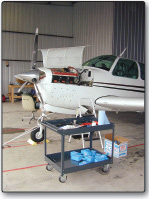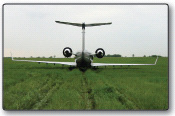I take exception with the statement made in the sidebar “Oil-Changing Tips” in Octobers article, “Is Oil Analysis Worth It?” You state, “If you are the owner, changing your own aircraft oil and filter is completely legal with the FAA.” Not so! The authorization for this action is in FAR 43.3(g), which states: “The holder of a pilot certificate issued under Part 61 may perform preventative maintenance on any aircraft owned or operated by that pilot which is not used under Part 121, 129, or 135.” Preventative maintenance is defined by FAR 43, Appendix A (c)]. An owner who is not a licensed pilot may not perform preventative maintenance. A licensed pilot may perform preventative maintenance on airplanes that he does not own, as long as he is an operator of that airplane. The requirement for making a log entry, your last point, is a very important step that is often overlooked by pilots performing preventative maintenance. The requirements for the log entry are outlined in FAR 43.9 and every pilot who performs preventative maintenance should know those requirements. Jerry Miel Thanks, Jerry. Youre right, of course. That error crept in by simply presuming all owners are also certificated pilots, something youve highlighted as not necessarily the case. Too often, we in the general aviation community refer to “owner-performed” maintenance tasks even though the FARs refer to owners relatively few times. None of which, of course, says that a certificated pilot 
Durango, Mexico
5191
As always, I enjoyed your editorial “5191” in Octobers issue. While I agree with much of what was said regarding Flight 5191, I believe you omitted some perspectives that deserve mentioning. There are several “safeguards” and just plain smart aviation techniques which might have prevented this tragic accident.

For starters, before pushing up the power, checking your HSI for the correct runway heading would be a great idea! Seeing a large lighted “X” at the departure end might be another clue that you dont want to go there. Also, if it is dark and the runway lights for your runway arent on, maybe you should ask tower why the lights arent on. If tower replies that the lights ARE on, that might be a clue that you arent where you thought you were.
If you have an FMS on your airplane, it should depict the runway you loaded up during the pre-takeoff checks. If it isnt lined up on a 12/6 line on your HSI, maybe you want to resolve that issue before releasing the brakes. Im sure your readers can come up with many more ways to check that you are on the correct runway.
Im not trying to apportion blame or fault for this accident, but there are many ways we can all ensure we are taking off on the correct runway without having a controller looking right at our airplane all the time. As pilots we do have to accept some of the responsibility for ensuring we do things correctly.
Matt Dailey
Louisville, Ky.
I think were on the same page, Matt. My concerns in writing that editorial had more to do with the political and public-perception ramifications than the operational ones. Your points, however, highlight what many pilots-commercial and non-commercial-have said and thought in the weeks since Flight 5195 crashed.
At the risk of flogging a dead horse in these pages, the final outcome of our flights are up to us. Attempting a takeoff on the wrong runway happens all too often. In fact, there was another instance, involving a Part 121 jet, in October. Rather than allowing complacency into the cockpit, we should be using all the tools available to us-most especially our eyeballs and experience-to prevent avoidable mistakes like this.




